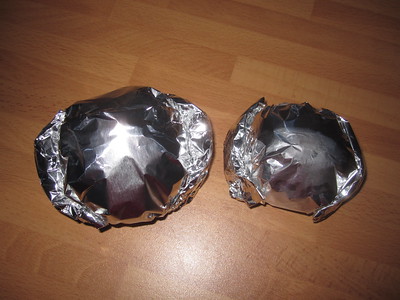
I've been working my way through a left-over bag of giant shop-bought marshmallows and wondering how difficult it would be to make them myself. My standard procedure in these cases is to watch videos on YouTube, the site turned out surprisingly helpful and pointed me towards "zefir" or "zephir". This is a Russian type of marshmallow sweet, which looked so beautiful and seemed quite easy to make, so I got on with this, especially since I had strawberries left over from the Rhubarb Dream Cake and a lot of agar agar in the cupboard following my experimentation with jelling liqueurs at Easter. I guess all my recent searches for Russian recipes is what prompted the zefir suggestion. I liked this one best, though I took inspiration from others as well. Below adapted amounts to fit with the strawberries I had to use up.
Ingredients
Makes 20 at 5 cm diameter
265 g strawberries
110 g caster sugar
1 tbsp lemon juice
1 large egg white
78 ml water
212 g caster sugar
2 tsp agar agar powder
icing sugar for dusting
Method
- First line several baking sheets with paper and make the strawberry puree by trimming, washing and quartering the strawberries and placing in a saucepan.
- Add the 110 g caster sugar and lemon juice and simmer for about 10 minutes and stirring occasionally.
- Push through a sieve to remove the seeds and get the puree really smooth and let cool down to room temperature, if it's still warm.
- Place 150 g of the puree in a large glass or metal bowl, add the egg white and whisk until it goes pale and very fluffy, like meringue.
- In another saucepan make the syrup. Place water,212 g of caster sugar and agar agar. Stir together, then place on the hop at medium-high heat and bring to a rolling boil while stirring. Let simmer for a further 7 minutes, while stirring constantly.
- When the syrup goes a bit gloopy, it's ready. Remove from the hob and slowly pour over the strawberry meringue fluff, while whisking continuously, very much like an Italian meringue.
- Once everything is incorporated and well mixed, transfer the mixture to a piping bag with an open star nozzle.
- Pipe 40 rosettes of about 5 cm diameter on the lined baking sheets, then leave for at least 24 h to dry out, it may take longer if the air is humid.
- Once a skin has formed on the surface, carefully peel from the paper and stick the bottoms together pair-wise. Sprinkle generously with icing sugar, then brush off the excess and store in an air-tight container. If they are still a bit sticky, cut up the baking paper and put between each or place in paper cupcake moulds.
I quite liked both the texture and the flavour, though I think the traditional size was a bit too big, as they are very sweet. So next time I'll aim for bite-size rosettes. Lundulph wasn't too impressed, he thought they were missing something and suggested they'd be better as decoration of a cake rather than to be eaten on their own.
Here they are on the dining table:

However, I gave a few to my Russian friend Byala and her response was to say it's the best zefir she's ever had and that she'd eaten almost all of them in one go.
Update on 2019-07-20: During our recent trip to Bulgaria, we found a shop selling Russian food and I bought a packet of pink and white zefirs - I'm pleased to say that I did get them right for texture and sweetness, though of course in the humid UK air, I needed 2 days for the drying and they were still rather sticky. I think Sweden in deepest Winter might be ideal, with its super dry air. My parents weren't too excited either, my Dad didn't like the texture much. I'm wondering if these could be piped on a plain and not too sweet biscuit to offset all the sugar. I must experiment.









